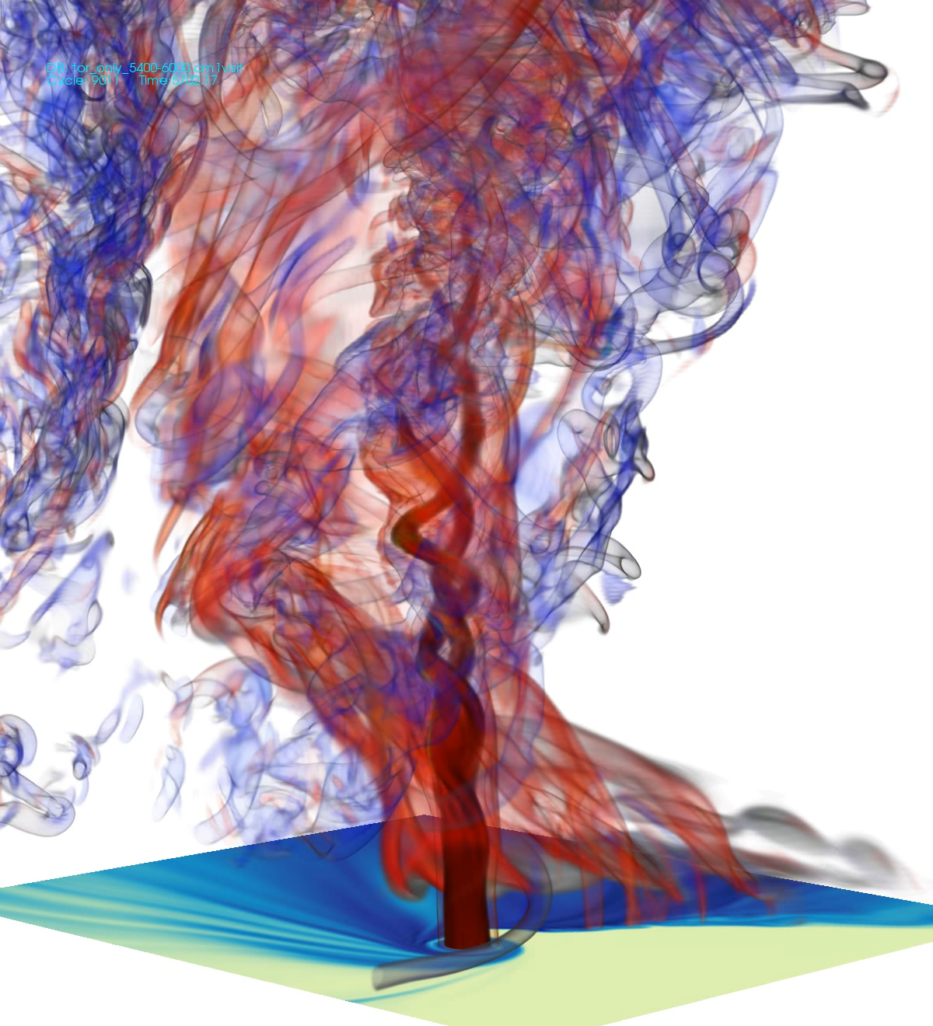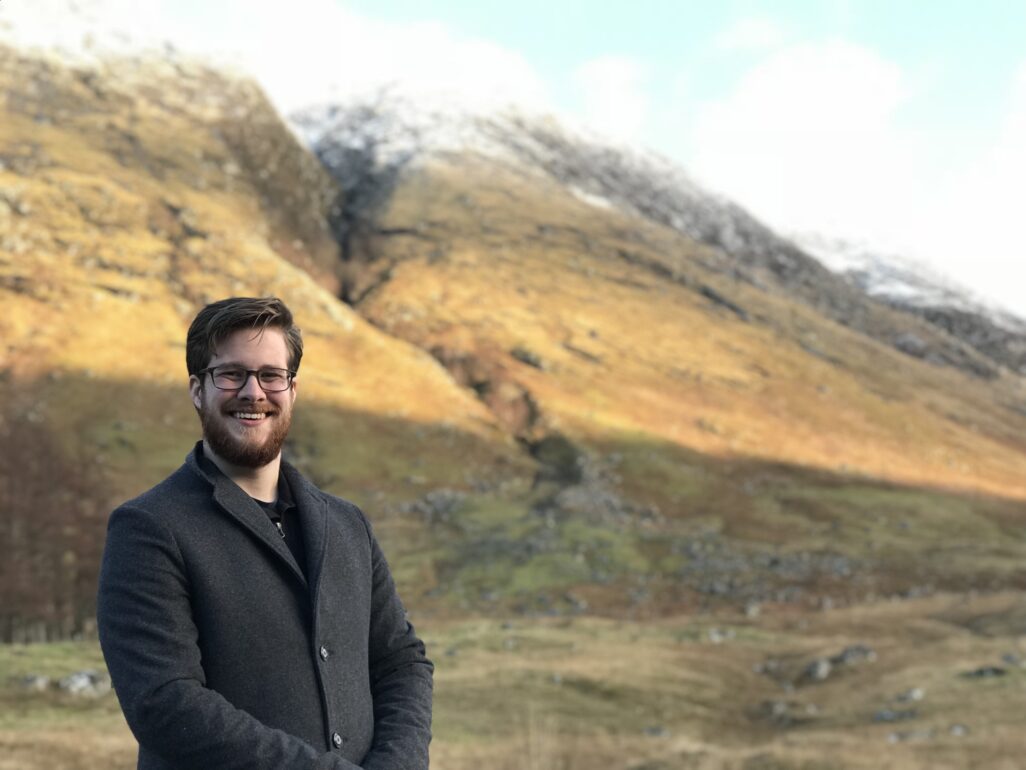Supercells, supercomputers and tornadogenesis
Through lines of code, Kelton Halbert simulates some of the world’s most violent thunderstorms to date. Long-lived, violent tornadoes — like those that devastated cities in El Reno, Oklahoma or Mayfield, Kentucky — are recreated in a supercomputer to better understand how and why tornadoes form, or why they don’t.
“Whether you get a supercell that spawns a tornado or not, it’s all useful information in our simulations,” says Halbert, graduate student at the University of Wisconsin–Madison Department of Atmospheric and Oceanic Sciences.

Credit: Kelton Halbert
Halbert came to UW–Madison in 2017 after receiving his undergraduate degree in meteorology from the University of Oklahoma in Norman, Oklahoma.
He plans to complete his Ph.D. in 2023 and has since accepted a position with the NOAA Cooperative Institute for Severe and High-Impact Weather Research and Operations (CIWRO), also in Norman, to continue his research investigating severe weather and the formation of tornadoes or tornadogenesis. The position is a research-to-operations job working closely with the NOAA/National Weather Service Storm Prediction Center. Halbert says he will be developing new forecast tools and techniques related to severe weather and tornadoes and working with the annual NOAA Hazardous Weather Testbed to evaluate those tools in an operational setting.
“I am using the expertise I’ve gained from my grad work with UW,” says Halbert. “Specifically working with super computers and modeling to create new forecasting tools with real world impacts.”
A supercell simulation begins with what is known as a ‘sounding’ or physical measurements of atmospheric conditions like temperature, humidity, air pressure, wind speed and direction. The measurements are sometimes derived from actual events like those that spawned deadly tornadoes in 2013 and 2021.

With these values uploaded, a powerful supercomputer at the Texas Advanced Computer Center at the University of Texas at Austin plays out the scenarios of turbulent air resulting from these conditions that are the seeds of severe weather. Each simulation takes anywhere from six hours to three days to run, with no guarantee of a tornado forming. Halbert says the randomness of the simulations mirror reality where conditions may or may not be conducive to forming tornadoes.
“It goes right back to principles of the chaos theory by Lorenz, where small perturbations in an initial state can expand in a lot of different directions,” says Halbert.
The simulations allow Halbert to rewind the storm scenes and investigate frame-by-frame the dynamics at play. Previous tornado research by UW–Madison Cooperative Institute for Meteorological Satellite Studies scientist Dr. Leigh Orf has revealed key structures such as inlet flows of cold air that are essential for starting and sustaining a tornado on its path.
Halbert plans to continue his research into severe weather while working with forecasters at the Storm Prediction Center to develop and improve tools and techniques, ultimately to improve weather forecasts and provide people more advanced warning time.
